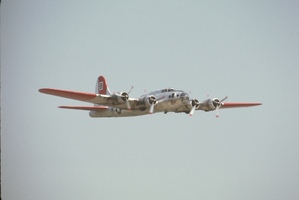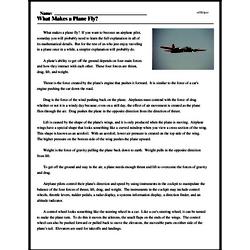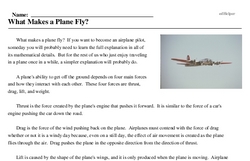What Makes a Plane Fly?
What makes a plane fly? If you want to become an airplane pilot, someday you will probably need to learn the full explanation in all of its mathematical details. But for the rest of us who just enjoy traveling in a plane once in a while, a simpler explanation will probably do.
A plane's ability to get off the ground depends on four main forces and how they interact with each other. These four forces are thrust, drag, lift, and weight.
Thrust is the force created by the plane's engine that pushes it forward. It is similar to the force of a car's engine pushing the car down the road.
Drag is the force of the wind pushing back on the plane. Airplanes must contend with the force of drag whether or not it is a windy day because, even on a still day, the effect of air movement is created as the plane flies through the air. Drag pushes the plane in the opposite direction from the direction of thrust.
Lift is caused by the shape of the plane's wings, and it is only produced when the plane is moving. Airplane wings have a special shape that looks something like a curved raindrop when you view a cross section of the wing. This shape is known as an aerofoil. With an aerofoil, lower air pressure is created on the top side of the wing. The higher pressure on the bottom side of the wing pushes the plane upward.




